Creating your content strategy can be broken down into easy to follow steps. In this article, I’m going to dive deeper into three components of a content strategy that are often forgotten about or neglected. Meaning these are three important factors that don’t usually get enough attention.
And if you’re working toward creating your own content strategy, check out my Content Strategy Framework: As Easy As ABC. It’ll give you the full step-by-step framework that you need to follow for a content strategy that works for your business. A strategy for your content that also grows with your business as it changes, your focus changes, or your audience evolves.
Let’s get started with 3 content strategy components that you don’t want to forget about.
AFFILIATE DISCLAIMER: I SOMETIMES LINK TO PRODUCTS AND SERVICES TO HELP COVER THE COSTS OF RUNNING THIS BLOG. THERE’S NO EXTRA COST TO YOU – AND I ONLY RECOMMEND PRODUCTS THAT I’VE BOTH USED PERSONALLY AND THINK ARE QUALITY PRODUCTS THAT HELP WITH EFFICIENCY. PLEASE READ MY AFFILIATE DISCLOSURE FOR MORE INFORMATION. THANKS FOR YOUR SUPPORT!
Table of Contents
- 1. Brand Focus
- 2. User Experience
- 3. Content Distribution
- How can you make your content strategy better?
- Conclusion
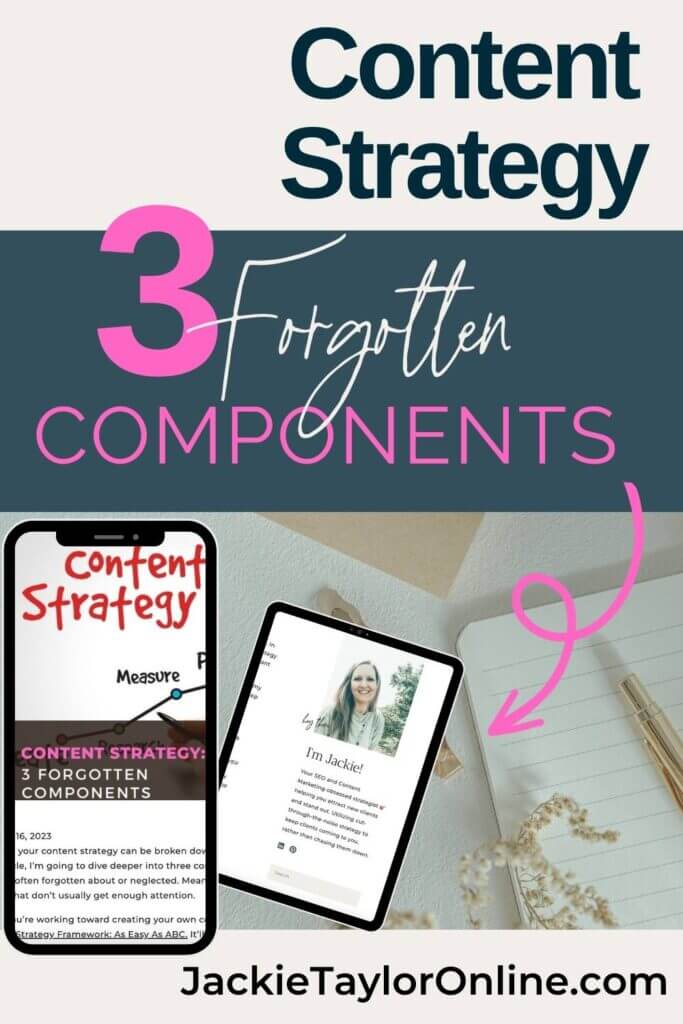
1. Brand Focus
Your brand is your business’ personality. It’s what attracts buyers, what gets them to stick around, and what gets them to go from one purchase to loyal buyers for life. Your brand is your way to humanize your business.
If you’re a solo mompreneneur, then it’s showing your own personality to your ideal buyers. Get them to connect with you emotionally. People don’t buy things. They buy emotions. They buy what they feel from your product. Women don’t buy Stanley’s because they’re just that good of a cup. Women buy Stanley cups because of how they feel walking around carrying it.
When you buy a new house, you aren’t just buying the house because you need it. You’re also thinking about what you’re going to do in this house. Bring your babies home to it? Host family holiday parties? Create traditions with your kids? You’re thinking about the experiences this new house could provide for your family.
Lastly, your brand is how your business is perceived by your audience.
Are you someone they can count on and trust? Are you someone that’s going to help them accomplish their goals or get the outcome they’re looking for? And it ties right into the user experience as a whole.
2. User Experience
Making the sale isn’t enough. It’s the entire user experience start to finish that your audience will remember.
Most people think about the user experience right up until the sale. That’s not effective. What you do as a business owner after the sale is made, now that’s what will set you apart.
- Do they need help knowing how to use your product or service?
- Do they need accountability?
- What will help buyers to get real results?
Because getting real results for your buyers is how you get recommendations, word of mouth marketing, and glowing testimonials. Also known as social proof.
3. Content Distribution
Content distribution simply put, means where you distribute or post your content online.
I recommend creating content for your main distribution channel, while also creating with your other distribution channels in mind.
When you create your initial content with your repurposing plan in mind, you’re able to make the whole process easier. You don’t have to worry about what to do next. You can create with those channels in mind, so everything is built right in. It makes repurposing your content smoother, easier, and most importantly faster.
Related Article: What is a Content Distribution Strategy?
The success of your content relies on four main areas:
- Market Research to make sure you know who your ideal buyers are and what they need. Know what they’re looking for help with, and how you can stand out by being unique. What’s your USP? And making sure your brand stands out in exactly the way that you want it to.
- Creating Content that connects with your ideal buyers, solves a gaping wound problem, and is easy and effective. You have to help them get real results.
- Distributing your content strategically. Picking the right online platforms, distributing your content in a way that your audience will like, and engaging with them.
- Measuring the results and adjusting as needed. Every content strategy is a work in progress. You’ll never be fully done. Just like you’re always learning and growing in business. Your content strategy will always be evolving and changing.
How can you make your content strategy better?
The best way to make your content better is with a content strategy. So if you haven’t already, create a strategy for you content. But what if you already have one, and you need to make it better? How can you realistically make your content strategy better?
Start with looking at your current data. Your data tells you what actions your audience is really taking. When you hear “the math ain’t mathing.” It means something just isn’t adding up. And your data will tell you if something just isn’t adding up.
Track Specific Data for a Better Content Strategy
- Traffic – The number one thing all online businesses need. Track unique visitors, unique page views, pageviews, and traffic source (where is the most traffic coming from?). Track for your website and see what other platforms are brining the most traffic to your site.
- Conversions – Track the number of sales you’re making. Are you making more sales on a certain page on your website? Why do you think that is? Are you making more sales after posting about a certain topic on social media? Where is the biggest interest, traffic, and sales coming from?
- Engagement – Which content gets your audience to click, comment, share, like, or reach out to you for your paid services? View under Engagement, overview on Google Analytics. You can also monitor engagement through analytics provided by social media platforms, or third party apps like Moz, SEMrush, Ahrefs, Buffer or Tailwind.
- SEO Performance – Use Google Analytics and Google Search Console to track metrics to see how well you’re doing in search results for search engines like Google. In Google Search Console, you’ll want to track keywords you’re ranking for. And find words you’re on the second or third page of results for because those will be easier to make a few changes and move yourself up in search results until you reach page one.
- Online Visibility – Track your overall online visibility or authority. According to Moz, you can score your website ranking by calculating your total click-through rate (CTR) divided by your total keywords you’re tracking. (Add all CTR rates / number of keywords you’re tracking = your search visibility score.)
These areas will track those most important metrics. By doing so, you can see what’s working. And then create more of that. What isn’t working, and you can stop doing those things.
After you’ve checked your data, you can look at the three forgotten areas of a content strategy from above. And try working on making these changes.
How to Evaluate Brand Value
Go back to the beginning with your brand. Evaluate how your brand is perceived.
- Are your colors inviting?
- Are your brand fonts easy to read?
- Do you have consistent graphics to go along with your written, audio, or video content?
- Are you showing your personality with your posts?
When you audit your brand, you’re making sure the way your business is perceived follows the way you want to be perceived. You’re making sure everything is consistent. Your brand image (colors, fonts, graphics), brand voice, overall messaging, and posting schedule.
You’re making sure the personality you’re giving your brand is not only you, but also unique. And finally, you’re making sure it’s the right fit for how you want to be perceived. And it’s the right fit for what your ideal buyers are looking for.
How to Measure User Experience
Ask your buyers or past clients for feedback. Survey your audience. Ask them questions to see what’s working and what isn’t. Find out the truth about your products or services. And get to know your audience’s terminology, so you can sell to them using their own words.
You’ll get that instant resonance with your content and your marketing message.
And make sure to ask the right questions at the right time. Don’t ask how much they like the product with an automated email three days after purchase if it’s an online course that takes 6 weeks to complete.
Don’t ask closed-ended questions like did you like this guidelines download? Their answer will just be a quick yes or no. They won’t give you any feedback, let alone the right feedback to help you make changes. And you definitely won’t get testimonials to use for social proof.
Be sure to ask structured questions for a guided testimonial that’ll highlight your product or service’s best features and benefits. Because that’s the kind of social proof that sells for you.
Need help with what survey questions to ask? Here’s how to Craft Target Audience Survey Questions for Maximum Insight into who your ideal buyers are and what they want.
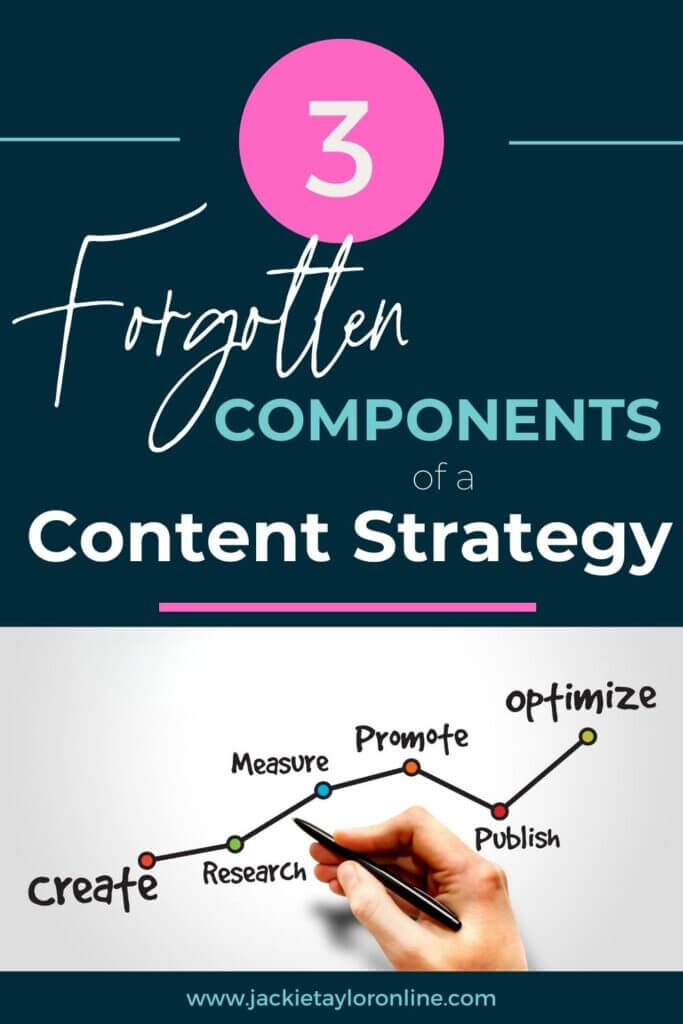
What to Include in a Content Distribution Plan
There are a few things to include in your content distribution plan. But these 6 things are the most crucial components of a content distribution strategy.
- Pick the right distribution channels or online platforms to be on
- Plan what type of content to create for those channels
- Execute. Actually create and post your content without quitting. Do this one and you’re ahead of the majority of your competition.
- Optimize your content so it gets in front of the right people at the right time in the buying process
- Measuring the impact of your content
- Leveraging automation tools such as scheduling tools or AI writing tools
Conclusion
The three most forgotten, but crucial components of a successful content strategy plan: brand focus, user experience, and content distribution. Many people do their market research, although most don’t fully complete it before moving on to the next step. And then everyone wants to create content and just expect traffic and money to start rolling in.
That’s not how it works.
Creating content is one small portion of the overall plan and strategy. And it relies on how well you’ve researched your target audience. And how they actually respond, engage, or interact with your content.
Your hypothesis for what actions they’ll take in response to your content doesn’t matter. What actions they actually take is what matters. So keep researching, creating, repurposing, and measuring your results. Because your audience’s actions may change over time or they may not fit with what you thought would happen. It’s always a work in progress.
-
10 SEO Myths and Facts: And how they’re crucial to your SEO success
Search engine optimization (SEO) can be intimidating. I get it. Especially with all the common SEO myths and facts out there today. So I’m going to get straight to the point with these top 10 SEO myths. And the truth behind each. Because you need to know what areas of SEO are important and whats…
What should a distribution plan include?
1. Pick the right distribution channels or online platforms to be on
2. Plan what type of content to create for those channels
3. Execute. Actually create and post your content without quitting. Do this one and you’re ahead of the majority of your competition.
4. Optimize your content so it gets in front of the right people at the right time in the buying process
5. Measuring the impact of your content
6. Leveraging automation tools such as scheduling tools or AI writing tools
What are the three components of content strategy?
There are a variety of components for a successful content strategy, but these three stand out. And they’re the most forgotten. Make sure to always think about your brand focus, user experience, and your content distribution plan. Remember to include these three main components, and your content WILL be successful. In fact, your content will stand out against any competitor.
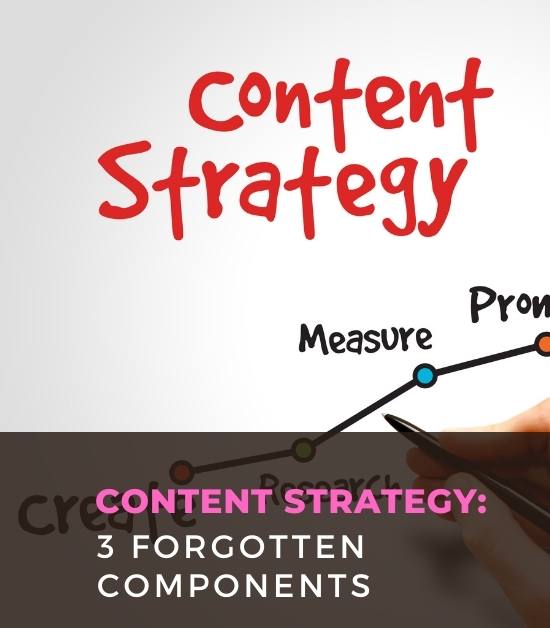
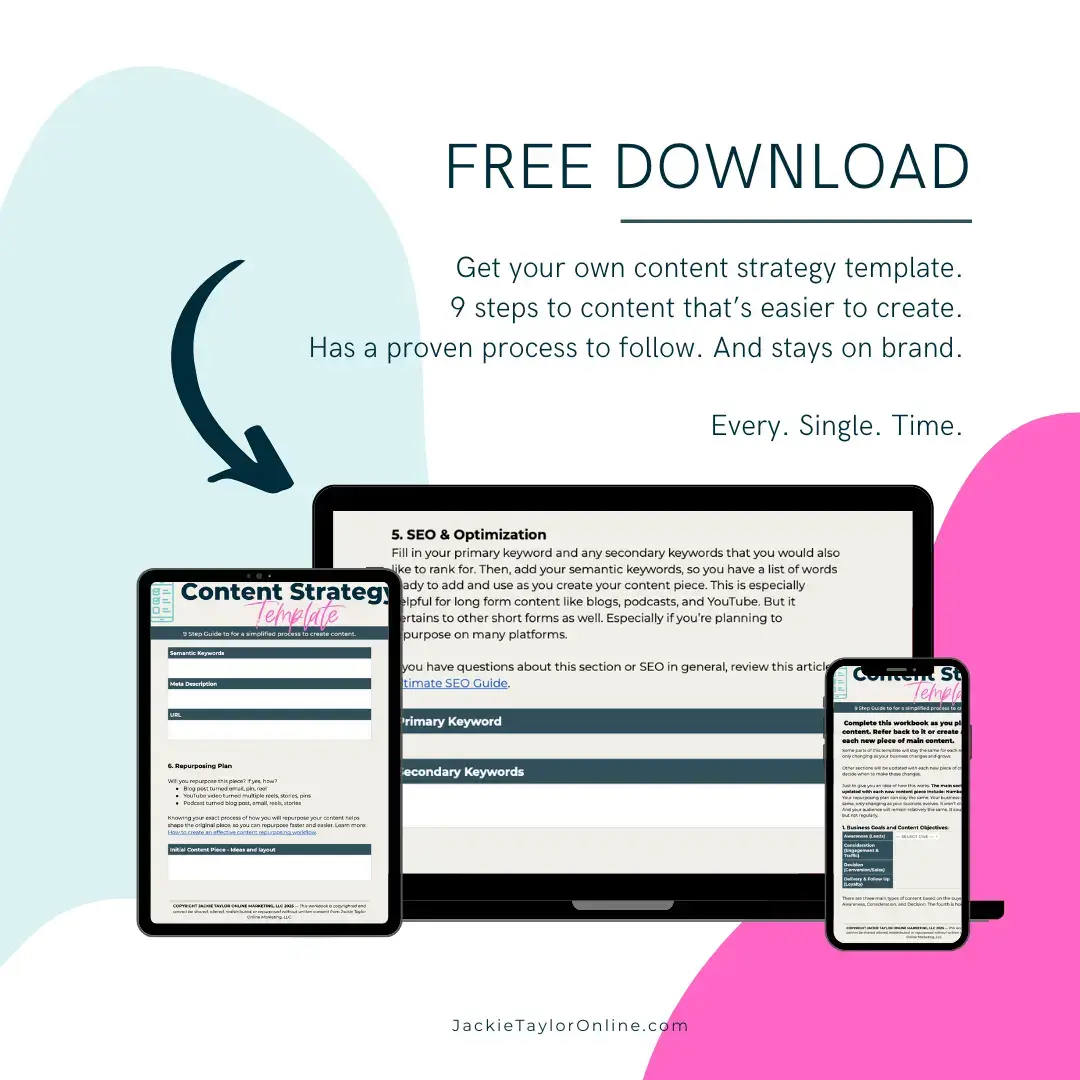

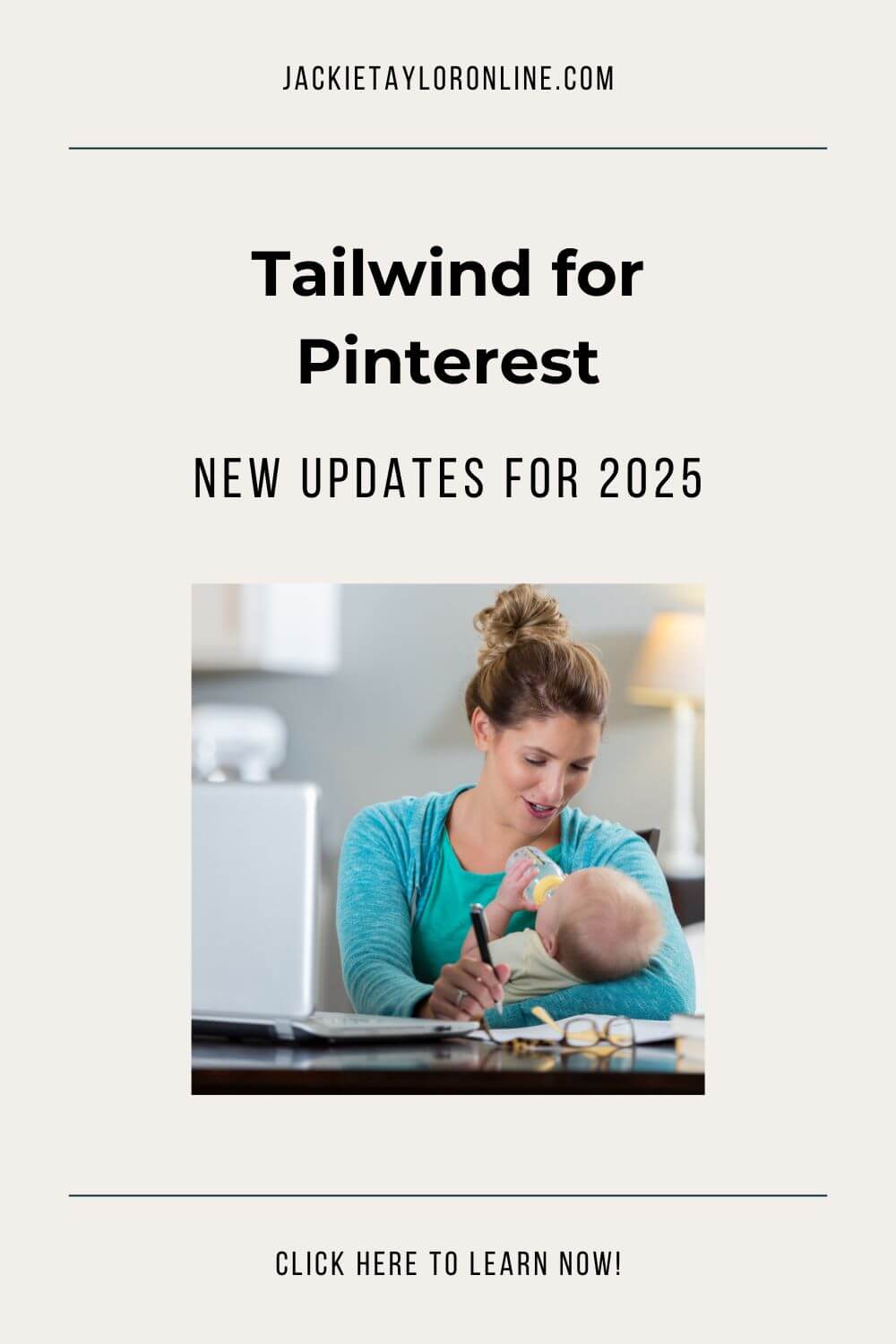
+ show Comments
- Hide Comments
add a comment